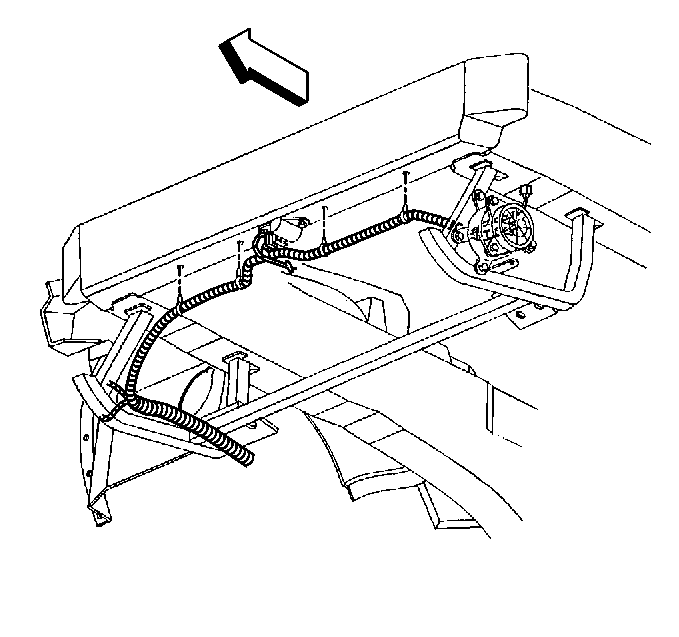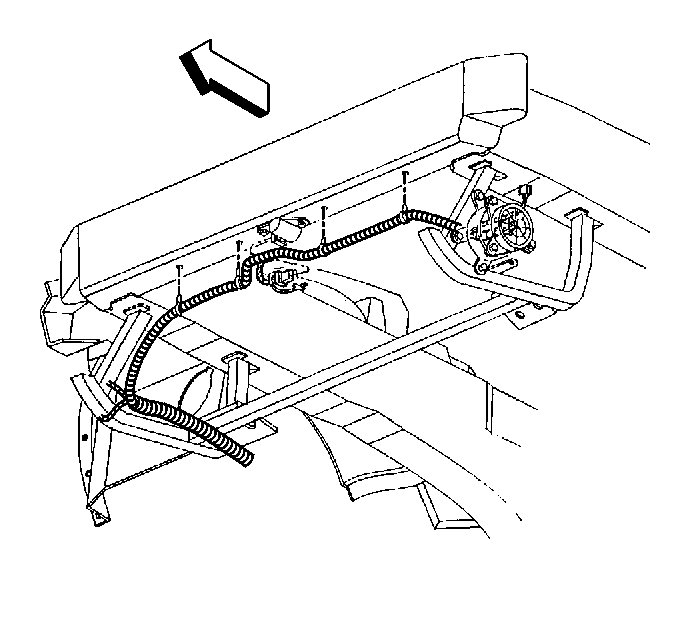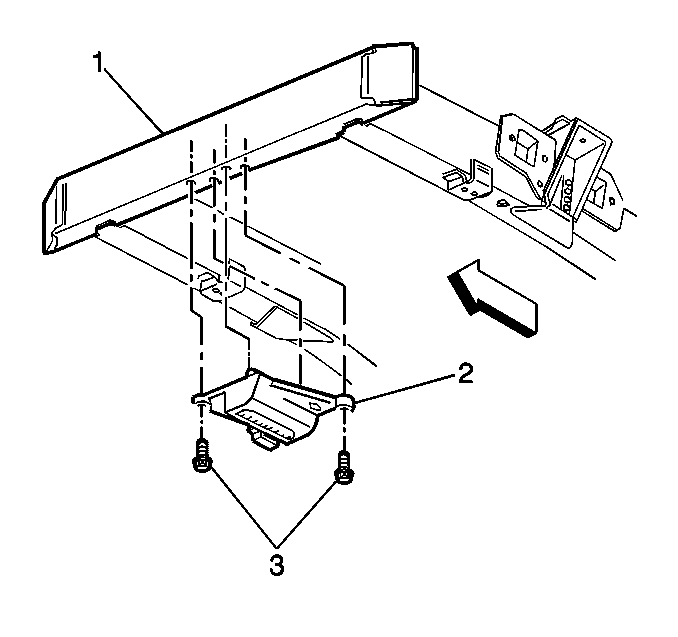Caution: Be careful when you handle a sensor. Do not strike or jolt a sensor.
Before applying power to a sensor:
• Remove any dirt, grease, etc. from the mounting surface. • Position the sensor horizontally on the mounting surface. • Point the arrow on the sensor toward the front of the vehicle. • Tighten all of the sensor fasteners and sensor bracket fasteners
to the specified torque value.
Removal Procedure
- Disable the SIR system. Refer to Disabling the SIR System .
- Remove the Air Cleaner Assembly. Refer to Air Filter Element and Air Cleaner Assembly in Engine Controls - 5.7L.
- Remove the Connector Position Assurance (CPA) from the inflatable restraint front end discriminating sensor harness connector.
- Disconnect the inflatable restraint front end discriminating sensor harness connector from the sensor.
- Remove the inflatable restraint front end discriminating sensor mounting fasteners (3).
- Remove the inflatable restraint front end discriminating sensor (2) from the front bumper impact bar (1).



Important: If the sensor mounting holes or fasteners are damaged to the extent that the sensor can no longer be properly mounted, use the following repair.
- Remove the stripped fastener and discard it.
- Drill out the stripped rivnut and discard it.
- Install new rivnut GM P/N 10281487.
- Install sensor with new fastener GM P/N 11514139.

Tighten
Tighten fastener to 10 N·m (89 lb in). Refer
to
Notice: Use the correct fastener in the correct location. Replacement fasteners must be the correct part number for that application. Fasteners requiring replacement or fasteners requiring the use of thread locking compound or sealant are identified in the service procedure. Do not use paints, lubricants, or corrosion inhibitors on fasteners or fastener joint surfaces unless specified. These coatings affect fastener torque and joint clamping force and may damage the fastener. Use the correct tightening sequence and specifications when installing fasteners in order to avoid damage to parts and systems.
in General Information.Installation Procedure
- Install the inflatable restraint front end discriminating sensor (2) to the front bumper impact bar (1).
- Install the inflatable restraint front end discriminating sensor mounting fasteners (3).
- Connect the inflatable restraint front end discriminating sensor harness connector to the sensor.
- Install the Connector Position Assurance (CPA) to the inflatable restraint front end discriminating sensor harness connector.
- Install the Air Cleaner Assembly. Refer to Air Filter Element and Air Cleaner Assembly in Engine Controls - 5.7L.
- Enable the SIR system. Refer to Enabling the SIR System .

Tighten
Tighten fasteners to 10 N·m (89 lb in). Refer
to
Notice: Use the correct fastener in the correct location. Replacement fasteners must be the correct part number for that application. Fasteners requiring replacement or fasteners requiring the use of thread locking compound or sealant are identified in the service procedure. Do not use paints, lubricants, or corrosion inhibitors on fasteners or fastener joint surfaces unless specified. These coatings affect fastener torque and joint clamping force and may damage the fastener. Use the correct tightening sequence and specifications when installing fasteners in order to avoid damage to parts and systems.
in General Information.

